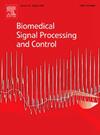SAM-MyoNet:基于先验知识驱动的任意分割模型的细粒度感知心肌超声分割网络
IF 4.9
2区 医学
Q1 ENGINEERING, BIOMEDICAL
引用次数: 0
摘要
心肌超声图像的自动分割对于心脏疾病的早期诊断和心功能的评估至关重要。然而,由于心脏超声图像质量差和结构形态复杂,这项任务仍然具有很高的挑战性。近年来,SAM及其衍生算法由于其广泛的先验知识和强大的推理能力,在各种复杂的分割任务中表现出优异的性能。尽管SAM在感知和推断心肌边缘方面有一定的优势,但其分割精度仍有待提高。为了更好地完成这项任务,我们提出了一种基于SAM的新型网络SAM- myonet,它有三个主要贡献。首先,我们引入了信息增强和驱动模块(IADM),该模块利用先验知识增强原始数据集并驱动SAM进行特征提取,从而生成高质量的初步分割预测。其次,我们引入了细粒度特征感知模块(FFPM),该模块采用双分支注意机制在初步结果的基础上对分割进行细化。一个分支增强了细粒度特征,而另一个分支保持了整体形态感知,进一步提高了分割精度。第三,我们结合形状监督来提高模型对心肌形状特征的学习。为了全面评估该网络的性能,我们在四种不同的心肌超声数据集上进行了广泛的实验。结果表明,我们的SAM-MyoNet优于当前最先进的(SOTA)方法。此外,我们用多中心数据验证了它的泛化性。我们的代码发布在https://github.com/yingyuhan/SAM-MyoNet。本文章由计算机程序翻译,如有差异,请以英文原文为准。
SAM-MyoNet: A fine-grained perception myocardial ultrasound segmentation network based on segment anything model with prior knowledge driven
The automatic segmentation of myocardial ultrasound images is critical for the early diagnosis of cardiac diseases and the assessment of cardiac function. However, this task remains highly challenging due to the poor image quality of cardiac ultrasound and the complex structural morphology. In recent years, Segment Anything Model (SAM) and its derivative algorithms have shown superior performance in various complex segmentation tasks due to their extensive prior knowledge and powerful inference ability. Despite its strength in perceiving and inferring the myocardial edges, the segmentation accuracy of SAM still needs to be improved. To better complete this task, we propose a novel network SAM-MyoNet based on SAM, which has three main contributions. First, we introduce the information augmentation and driving module (IADM), which utilizes prior knowledge to augment the original dataset and drive SAM for feature extraction, thereby generating high-quality preliminary segmentation predictions. Second, we introduce the fine-grained feature perception module (FFPM), which employs a dual-branch attentional mechanism to refine segmentation based on preliminary results. One branch enhances fine-grained features, while the other maintains overall morphological perception, further improving segmentation accuracy. Third, we incorporate shape supervision to improve the model’s learning of myocardial shape characteristics. To comprehensively evaluate the network’s performance, we conducted extensive experiments across four different myocardial ultrasound datasets. The results show that our SAM-MyoNet outperforms the current state-of-the-art (SOTA) methods. Furthermore, we validate its generalizability using multi-center data. Our code is released at https://github.com/yingyuhan/SAM-MyoNet.
求助全文
通过发布文献求助,成功后即可免费获取论文全文。
去求助
来源期刊

Biomedical Signal Processing and Control
工程技术-工程:生物医学
CiteScore
9.80
自引率
13.70%
发文量
822
审稿时长
4 months
期刊介绍:
Biomedical Signal Processing and Control aims to provide a cross-disciplinary international forum for the interchange of information on research in the measurement and analysis of signals and images in clinical medicine and the biological sciences. Emphasis is placed on contributions dealing with the practical, applications-led research on the use of methods and devices in clinical diagnosis, patient monitoring and management.
Biomedical Signal Processing and Control reflects the main areas in which these methods are being used and developed at the interface of both engineering and clinical science. The scope of the journal is defined to include relevant review papers, technical notes, short communications and letters. Tutorial papers and special issues will also be published.
 求助内容:
求助内容: 应助结果提醒方式:
应助结果提醒方式:


